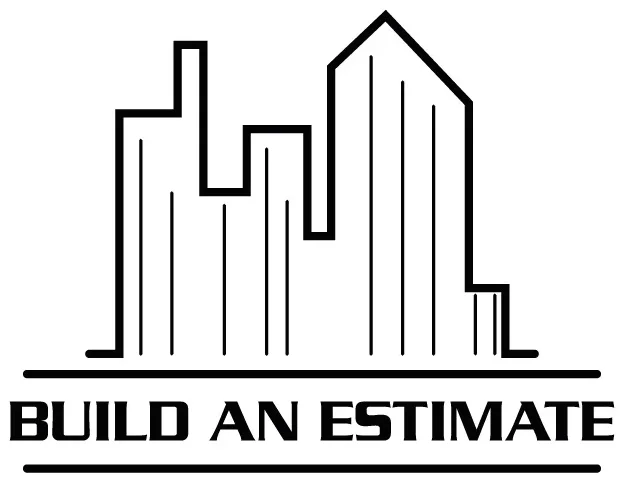- HOME
- SERVICES
- OUR TRADES
- SAMPLES
- Build An Estimate – About Us
- CONTACT US
- Home
- Services
- Our Trades
- Samples
- Pricing
- Blog
- About Us
- Contact
- HOME
- SERVICES
- OUR TRADES
- SAMPLES
- Build An Estimate – About Us
- CONTACT US
- Home
- Services
- Our Trades
- Samples
- Pricing
- Blog
- About Us
- Contact

Expert Guide to Construction Estimating Consultants
September 6, 2023
Construction Cost Estimating: Ultimate Guide for Business Owners
November 20, 2023How to Write a Construction Estimate in 8 Steps
If you’re in the construction business, you understand that it is crucial to write a Construction estimate that is accurate and detailed for the success of your projects. A well-crafted construction estimate not only helps you secure contracts but also ensures that your projects stay on budget and on schedule. In this comprehensive guide, we will walk you through the process of writing a construction estimate in 8 steps. By the end of this article, you’ll have the knowledge and confidence to create estimates that set you apart from the competition.
Table of content:
- Step 1 – Gather Project Information
- Step 2 – Calculate Material Costs
- Step 3 – Estimate Labor Costs
- Step 4 – Include Overhead and Profit
- Step 5 – Factor in Contingencies
- Step 6 – Create a Detailed Scope of Work
- Step 7 – Present a Professional Proposal
- Step 8 – Review and Revise
- Conclusion – Construction Estimate in 8 Steps
- FAQ

Step 1 – Gather Project Information
The first and most crucial step in creating a construction estimate is to gather all the necessary project information. This includes architectural plans, engineering drawings, project specifications, and any other relevant documents. You need a clear understanding of the project’s scope, materials, and labor requirements before you can move forward.
Step 2 – Calculate Material Costs
Once you have a thorough understanding of the project, it’s time to calculate the material costs. Start by listing all the materials required, including quantities and specifications. Research current market prices for these materials and factor in any potential price fluctuations. Don’t forget to account for waste and extra materials to ensure you have everything you need on-site.
Step 3 – Estimate Labor Costs
Labor costs are a significant part of any construction project. To estimate labor costs accurately, break down the project into tasks or phases, and determine the number of labor hours required for each. Consider the skill level and experience of your labor force when calculating hourly rates. It’s essential to be realistic about labor productivity to avoid underestimating costs.
Step 4 – Include Overhead and Profit
In addition to material and labor costs, your construction estimate should account for overhead expenses and profit margins. Overhead costs may include office rent, insurance, equipment maintenance, and administrative salaries. Determine an appropriate profit margin that reflects your business goals and market competitiveness.
Step 5 – Factor in Contingencies
Construction projects are rarely without unexpected challenges. To mitigate risks, include contingency funds in your estimate. Contingencies should cover unforeseen issues, such as weather delays, design changes, or unforeseen site conditions. It’s better to be prepared for surprises than to be caught off guard.
Step 6 – Create a Detailed Scope of Work
Your construction estimate should include a detailed scope of work that outlines the tasks, responsibilities, and timelines for the project. Clearly define each phase of the construction process, from site preparation to final inspections. A well-defined scope of work helps prevent misunderstandings and disputes with clients.
Step 7 – Present a Professional Proposal
Now that you’ve gathered all the necessary information and calculated costs, it’s time to present your construction estimate as a professional proposal. Use a clear and organized format that includes a cover letter, executive summary, detailed cost breakdowns, and any relevant appendices. Ensure that your proposal is easy for the client to understand.
Step 8 – Review and Revise
Before finalizing your construction estimate, review it carefully. Check for accuracy in material and labor calculations, as well as pricing. Have a colleague or supervisor review the estimate as well to catch any potential errors or oversights. Be open to revisions and adjustments based on feedback.
By following these eight steps, you’ll be well on your way to creating construction estimates that not only meet industry standards but also exceed client expectations. Remember that attention to detail, accuracy, and professionalism are key to winning contracts and building a reputation for excellence in the construction industry.
Conclusion – Construction Estimate in 8 Steps
If you’re in the construction business, you understand that creating accurate and detailed estimates is crucial for the success of your projects. A well-crafted construction estimate not only helps you secure contracts but also ensures that your projects stay on budget and on schedule. In this comprehensive guide, we will walk you through the process of writing a construction estimate in 8 easy-to-follow steps. By the end of this article, you’ll have the knowledge and confidence to create estimates that set you apart from the competition.
FAQ
Q. What are the different types of construction estimates?
There are four main types of construction estimates:
- Conceptual estimates: These estimates are developed early in the project planning process when limited information is available. Conceptual estimates are typically accurate to within 25%.
- Preliminary estimates: Preliminary estimates are created when more detailed information about the project is available, such as design drawings and specifications. Preliminary estimates are typically accurate to within 10-15%.
- Detailed estimates: Detailed estimates are created once all of the project information is finalized, including construction plans, material costs, and labor rates. Detailed estimates are typically accurate to within 5-10%.
- Final estimates: Final estimates are created just before construction begins and reflect any last-minute changes to the project scope or materials. Final estimates should be as accurate as possible to avoid surprises during construction.
Q. What are the most common mistakes people make when creating construction estimates?
Some of the most common mistakes people make when creating construction estimates include:
- Underestimating material costs: Material costs can fluctuate over time, so it’s important to factor in potential price increases when creating your estimate. It’s also important to account for waste and extra materials to ensure you have everything you need on-site.
- Underestimating labor costs: Labor costs are a significant part of any construction project, so it’s important to be realistic about hourly rates and productivity.
- Not including overhead and profit: Overhead expenses and profit margins should be factored into your construction estimate to ensure profitability.
- Not factoring in contingencies: Unexpected events can happen during any construction project, so it’s important to include contingency funds in your estimate to cover unforeseen costs.
- Not creating a detailed scope of work: A well-defined scope of work helps prevent misunderstandings and disputes with clients. Be sure to clearly outline the tasks, responsibilities, and timelines for the project in your estimate.
Q. What are some best practices for creating accurate construction estimates according to CFMA?
Here are some best practices for creating accurate construction estimates:
- Use historical data: If you have historical data from previous projects, use it to your advantage. This data can give you a good starting point for estimating material costs, labor costs, and overhead expenses.
- Get quotes from multiple suppliers: When estimating material costs, get quotes from multiple suppliers to ensure you’re getting the best possible price.
- Be realistic about labor productivity: Don’t overestimate how much work your crew can accomplish in a day. Consider the skill level and experience of your labor force when estimating labor costs.
- Factor in overhead and profit: Overhead expenses and profit margins should be factored into your construction estimate to ensure profitability.
- Create a detailed scope of work: A well-defined scope of work helps prevent misunderstandings and disputes with clients. Be sure to clearly outline the tasks, responsibilities, and timelines for the project in your estimate.
- Review and revise your estimate: Before finalizing your construction estimate, review it carefully and have a colleague or supervisor review it as well to catch any potential errors or oversights.






